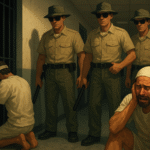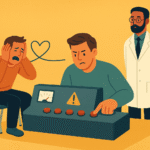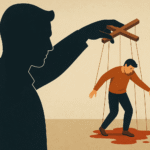On March 13, 1964, a young woman named Kitty Genovese was brutally murdered in front of her apartment building in New York. At least 38 neighbors heard her screams for help. But no one intervened.
This shocking case sparked one of the most famous concepts in social psychology: the bystander effect. It reveals a paradox in human behavior: the more people witness an emergency, the less likely anyone is to act.
What is the bystander effect?
The bystander effect occurs when the presence of multiple people dilutes individual responsibility. In other words: everyone assumes that “someone else will do something,” but in the end, no one does.
This phenomenon was studied in depth by psychologists John Darley and Bibb Latané in the late 1960s. Through experiments, they demonstrated that in situations of danger or urgency, the number of witnesses directly affects whether someone decides to help.
An everyday example
Imagine you’re in a crowded subway and someone faints. You might think:
- “Surely someone else has already called for help.”
- “There must be a doctor here who knows better what to do.”
- Or even: “I don’t want to make a scene in front of so many people.”
This hesitation explains why, in large groups, help often arrives later than when only one or two people are present.
Why does it happen?
Several psychological mechanisms are behind the bystander effect:
- Diffusion of responsibility: the more witnesses there are, the less responsible each person feels.
- Social influence: if others don’t act, we interpret the situation as “not serious enough.”
- Fear of judgment: we avoid acting for fear of making a mistake or looking ridiculous.
How to overcome the bystander effect
Fortunately, being aware of this phenomenon can help us counteract it. If you ever witness an emergency:
- Act as if you are the only person present.
- Don’t wait for others—take initiative.
- If possible, address someone directly: “You, call an ambulance.” This reduces the diffusion of responsibility.
Why it still matters today
The bystander effect isn’t just about crime or emergencies. It’s present in many everyday situations:
- When a classmate is bullied and no one steps in.
- When someone suffers harassment at work and colleagues remain silent.
- When we see an injustice in the street and choose to look the other way.
Every time we stay silent or passive, we become part of the problem.
Final reflection
The bystander effect reminds us that courage is often about making a small decision: to act, even when others don’t.
The next time you witness an injustice, remember Kitty Genovese and ask yourself: Will I be just another spectator, or the person who makes a difference?
👉 On our YouTube channel, PsyLife, you’ll find a clear and visual video about the bystander effect, its psychological roots, and how you can learn to act when it truly matters.




